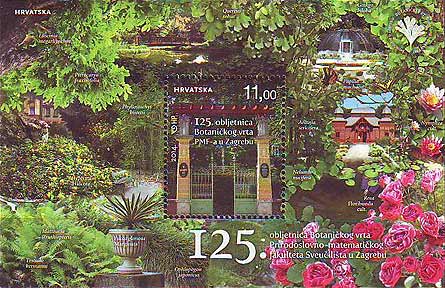Collegium Ragusinum, Dubrovnik


CROATIA, 2008, the 350th anniversary of Dubrovnik College
and its special FDI cancel
After almost a century of tentative beginnings in Ragusa (Dubrovnik), from the arrival in 1560 of Fr. Nicholás Bobadilla, SJ, one of Ignatius' First Companions, down to the work of Fr. Bartol Kašic, SJ, the famous linguist, the Jesuits eventually established the Jesuit College of Dubrovnik (Collegium Ragusinum) in 1658. Construction of the school building began in 1662. Its the facade appears on this stamp. St. Ignatius' Church next door, designed by Br. Andrea Pozzo, SJ, was begun in 1699. At the Suppression in 1773, the Dubrovnik diocese assumed responsibility for the college. At first local clergy provided education, and later, until 1868, the Piarist (Scolopi) Fathers. For a while the building was taken over as a military hospital, but in 1940 it was returned to the Dubrovnik diocese and housed a seminary. Today a classical gymnasium is located on the premises named after the college's most illustrious alumnus, Fr. Roger Boscovich, SJ.
The Jesuit High School, Požega
CROATIA, 1999, the tercentenary of the school, Scott 410The Jesuits were active in Požega from 1698 until the Suppression in 1773. They set up a high school (gymnasium) and a college in 1699 (the same year that Antun Kanižlic was born in this town). They owned the Kutjevo estate and the income from that estate was used to finance the schools. Along with the full 6-year secondary school education program, they organized a school of philosophy and theology, the Academia Posegana, which flourished between 1761 until 1776. After the Suppression in 1773 the teaching in the high school was continued by the former Jesuits who stayed as staff. The school was taken over by the Paulists in 1776, and by the Franciscans in 1786.
The
Cathedral of St. Vitus, Rijeka


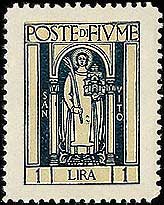
FIUME, 1923, Scott 178-180
The city of Rijeka (in Croatian; Fiume in Italian, both names meaning river) is the principal seaport and third largest city of Croatia. As a strategic deep-water port, it is a desirable piece of property and has changed hands among the nations many times. Although there has been a church dedicated to the patron saint and protector of Rijeka since the Middle Ages, the cathedral as we see it today was founded in 1638 by the Jesuits and is pictured on these stamps in the hands of St. Vitus, its patron. It was promoted to cathedral status in 1922. As these "Jesuit" stamps and their overprints indicate, Rijeka was an independent state (called Fiume) in 1923, but was incorporated into Italy in 1924. In 1945 Yugoslavia liberated it from German occupation and incorporated it in 1947 as part of the province of Croatia, which became a separate nation in 1991. The church was designed by Br. Giacomo Briano da Modena, SJ (1589-1649), the Society’s architect in Poland and in northern Italy.



1924, Scott 190-192
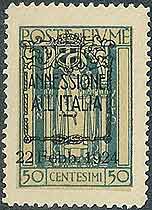

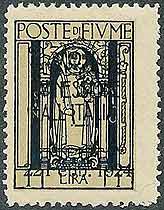
1924, Scott 202-204
The Cathedral, Varaždin



YUGOSLAVIA, 1981, 800th anniversary of Varazdin, Scott 154
"The Republic of Serbian Krajina Government-in-exile," 1998
CROATIA, 1998, following the Europa festival theme of the year, Scott
357
The stamp and souvenir sheet above show a panoramic view of Varaždin from 1732, a watercolor done by Sigismund Kappin. It includes on the far right the tower of a former Jesuit church, Saint Mary's Assumption. The Jesuits had come to town in 1642, built the church in 1647. It was named Varaždin's Cathedral of the Assumption in 1997. It is one of the most important early-Baroque churches in northern Croatia. The exterior is simple but it is noted for its Baroque entrance and interior and a gilded main altar with a painting of the Assumption, as well as the Blaž Gruber frescoes which date to 1727. The Jesuit gymnasium (see below) was connected with the church and may be represented in this image. The same watercolor had been used on the 2005 postal card seen below.



CROATIA, 2005, postal card to commemorate the Fire Brigade Olympics
which took place in Varaždin
It is based on a panoramic view of Varaždin from 1732, a watercolor done
by Sigismund Kappin (see above).
The church at the right edge of the vignette is a former Jesuit church
CROATIA, 2009, souvenir sheet for 800th anniversary of the Andrew's
Charter
all with the tower of the cathedral, a former Jesuit church on the far right,
Scott 732
The Jesuit Gymnasium, Varaždin

CROATIA, 2006, postal card commemorating the former Jesuit gymnasium at
Varaždin
featuring the seal and facade of the school.
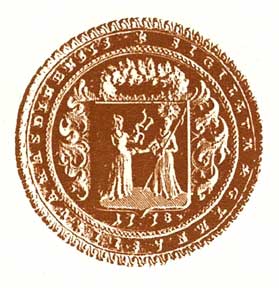

the seal of the gymnasium --- the facade of the gymnasium
The Jesuits deserve the most credit for the development of the school system in Croatia. They founded gymnasia that were accessible to all citizens and comprised six grade levels in Zagreb (1607), in Rijeka (1630), in Varazdin (1636), in Pozega (1698), in Karlovac (1736) and in Ostijek (1766). In Varaždin in what is now Pavlinska (Pauline) Street, the Jesuits who had come to Varaždin in 1632, built the church of St. Mary's Assumption in 1647. They had established the Varaždin Gymnasium, or secondary school, in 1636, although it burned down in 1648. They then rebuilt the school, uniting it architecturally with the church. The nearby Jesuit house is now the bishop's residence. Varaždin later became the administrative center of Croatia, until the fire of 1776 destroyed most of the town, but by then the Society had been suppressed, and the Paulines had taken over the running of the church.
The Classical Gymnasium, Zagreb



CROATIA, 2007, the 400th anniversary of the Classical Gymnasium at
Zagreb, Scott 639, and its FDI cancel
The "CD" on the book is the Roman numeral for 400.
CROATIA, 2004, show cancel showing an entrance of the former Jesuit
college at Zagreb,
which now houses the Klovicevi Dvori Gallery on Jesuit Square (Jezuitski trg
4)
The Jesuits came to Zagreb at the city's request in 1606 to establish a secondary school (called variously a high school, college or gymnasium). They were given the deserted Dominican monastery by the south town wall of the Upper Town, a building which they adapted and extended several times as the school grew. On 3 June 1607, they began here with 260 students the Classical Gymnasium (Klasicna Gimnazija), the oldest secondary school in Croatia and in southeastern Europe, and it has been in operation ever since. At the Suppression in 1773, the gymnasium became a state school. More
St.
Catherine Church and the Jesuit Residence, Zagreb

CROATIA, 1995, the 350th anniversary of
the Jesuit residence in Zagreb, Scott 231
The facade of St. Catherine Church is to the right of the image


AUSTRIA, 2006, personalized stamp arranged by the Croatian Philately
Club as part of a celebration in Vienna on 4 November 2006
The photograph of the upper city shows (see detail) to the left, the church
of St. Catherine with its tower,
and to the right, the former Jesuit school at Zagreb, which now houses the
Klovicevi Dvori Gallery at 4 Jesuit Square
In 1620 the Jesuits began to build the magnificent Baroque St. Catherine Church, to replace a smaller chapel of the same name. It was not completed until 1632. In 1641 they began their own residence adjacent to the church, at least one wing of which was completed in 1645 — the event apparently commemorated by Croatia in 1995. The residence, however, and the church were destroyed in the great fire of 1674, and were not reconstructed until the 18th century.
The University of Zagreb
The National University Library, Zagreb

CROATIA, 1994, the 325th anniversary of the founding of the University, Scott 187 and its FDC cancel
the seal of Leopold, the vice-chancellor's chain of office, and a university building



CROATIA, 2007, the 400th anniversary of the National University Library,
showing the facade of the old and new NUL buildings, one reflected in the other, Scott 641, and its FDI cancel
CROATIA, 2011, the 50th anniversary of the Institute of Art History, Scott 814
CROATIA, 2014, the 125th anniversary of the Faculty of Science Botanical Garden, Scott 900In 1662 within the academic halls of the Classical Gymnasium there began a Jesuit academy, the Neoacademia Zagrabiensis, offering courses eventually in philosophy, theology and law. On September 23 of 1669 Leopold I, the Holy Roman Emperor and the King of Hungary and Croatia, granted this academy formal university status. This was the first beginnings of the University of Zagreb, the oldest university in Croatia and the rest of southeastern Europe. It was run by the Jesuits until their Suppression in 1773. After the Suppression it became the Royal Academy of Sciences with the three faculties mentioned above, and after some further transformation was officially designated the University of Zagreb in 1874.
The library was founded in 1607 as the library of the Jesuit's first school in Zagreb. It became the library of the academy and then of the university, was opened to the public, and finally was named the national library.
The Institute of Art History is a public scientific institution focusing on the history and theory of Croatian visual arts from the Early Middle Ages to recent events. The Institute was founded by professors Grgo Gamulin and Milan Prelog in 1961 at the Faculty of Arts at the University of Zagreb in close collaboration with the Department for History of Art. Over time, it changed its status until under a 1993 law it acquired its present status as a public institute.


